Having visited the city twice, I consider it one of the highlights of Colombia, especially when it’s combined with some of the great beaches and islands nearby. Here’s everything you need to know to have the best experience in Cartagena!
Plan your trip to Cartagena
Must-know for Cartagena
Cartagena was established by Spanish settlers in 1533 and later became a center of the slave trade during the 17th century. This is why the city has a strong Afro-Caribbean influence, giving it a unique charm. Its center has been declared a UNESCO World Heritage Site.
What to expect
How to describe Cartagena? Well, it is like a juicy peach of a travel destination. Utterly tourist-friendly, it’s incredibly Instagrammable while retaining an easy charm. The streets are flooded with colorful colonial buildings, eye-catching street art, and people enjoying the vibrant nightlife, and sunny days are spent at one of the city’s wonderful beaches.
If you’re a traveler seeking remote adventures or obscure hidden gems, then you may find Cartagena is a bit sugary for your tastes. However, most tourists consider Cartagena as one of the essential stops in Colombia.
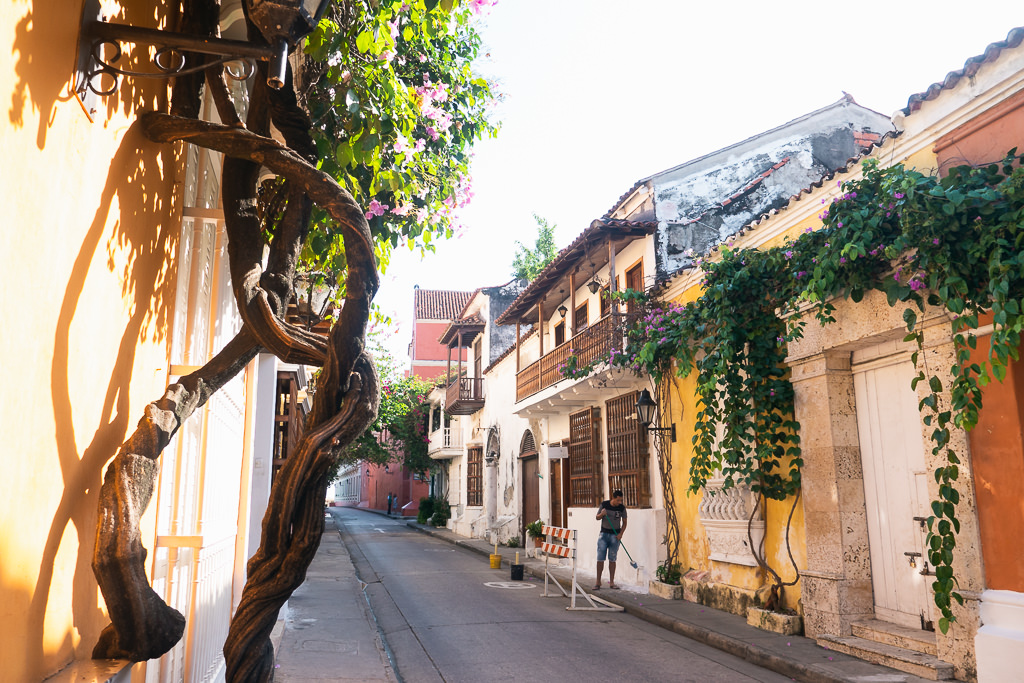
Best activities
Cartagena doesn’t have quite as many museums or cultural sights as Medellin or Bogota. It’s best enjoyed for its fun nightlife (which in part takes place on the streets), the wonderful nearby tropical islands, and the gorgeous old city where you can spend a lot of your time drinking, eating, and wandering around.
The beaches closest to Cartagena are not that amazing. For much better beaches, consider a trip to Playa Blanca or to the Rosario Islands.
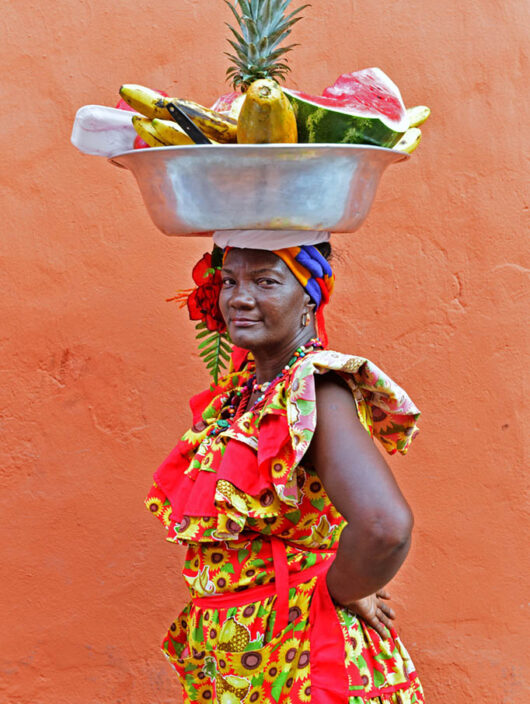
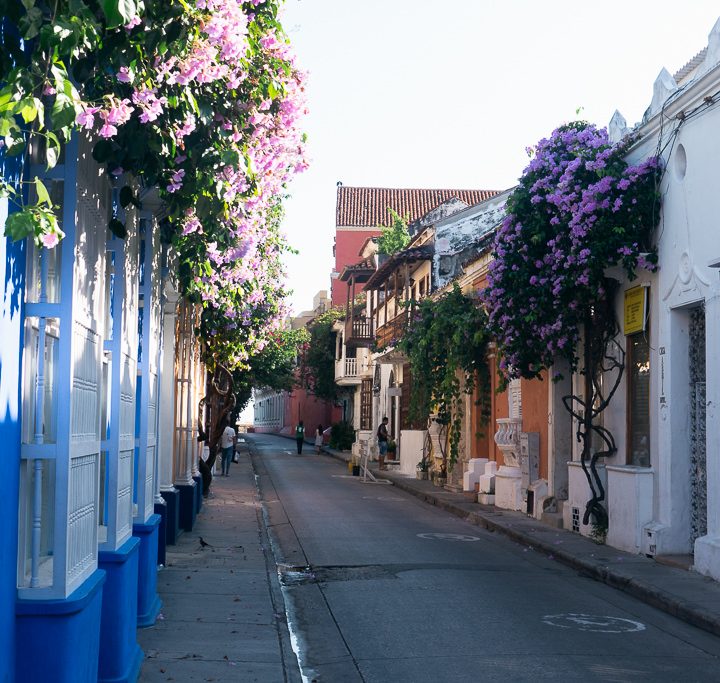
How long to stay
If you’re in pure sightseeing mode, you can cover Cartagena in 2 days. However, it can be worth staying longer to enjoy the atmosphere and to take trips out to the beaches and islands. For some inspiration, check out our one-week in Colombia itinerary which starts in Cartagena.
Where to stay
Cartagena is the easiest place in Colombia to find great boutique hotels — often in wonderfully restored colonial buildings. Check out the best boutique hotels if you’re looking for upscale options. If you’re a budget traveler, consider these top hostels in Cartagena.
Safety
The touristy areas of the Old City, Getsemani, and Boca Grande are relatively very safe Apart from taking the usual precautions, you can be fairly relaxed here. Other areas of Cartagena can be less safe.
- Take a taxi if visiting the La Popa convent outside the center.
- If visiting the chaotic market of Bazurto, which is also far outside the center, you may wish to do so with a local guide.
The tourist areas are separated from the rest of the city by a canal, so it’s unlikely you’ll just wander off into a questionable area. All things considered, Cartagena is one of Colombia’s most tourist-friendly cities.
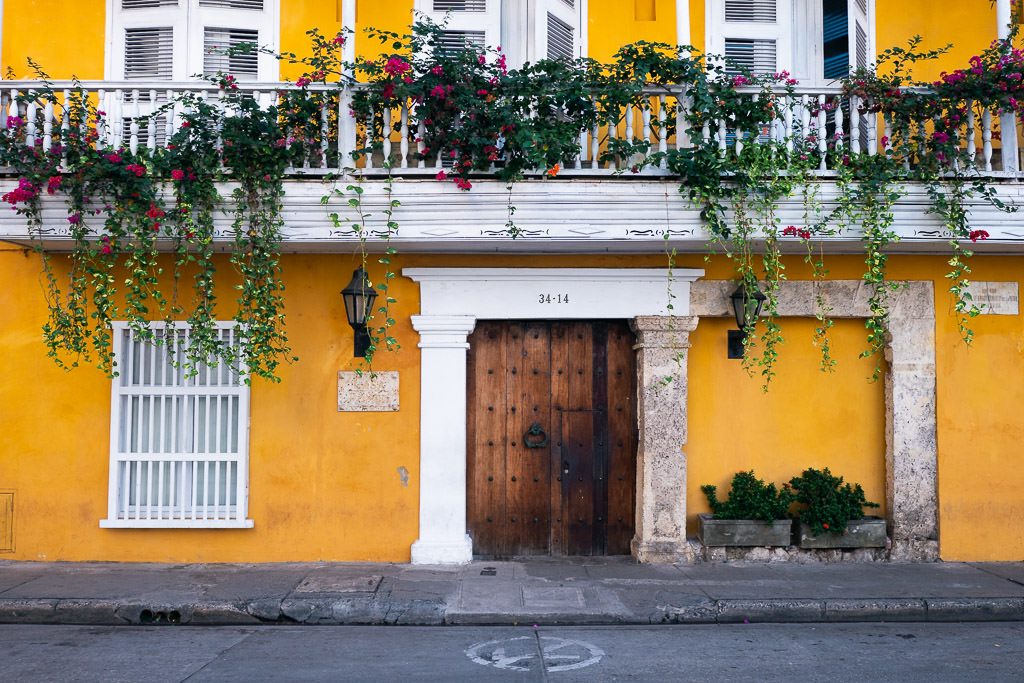
Annoyances
Although I’ve not experienced it myself, many travelers report getting hassled in the old town by pushy sellers. Simply ignore them if you’re not interested in buying any fruit or trinkets.
Climate
It can get rather hot and sweaty in Cartagena. The high temperatures hover around 31°C or 88°F year-round, with an average humidity of 90%. You may wish to avoid the mid-day heat and schedule most of your activities for the morning or evening.
You might end up with a few sweaty selfies!
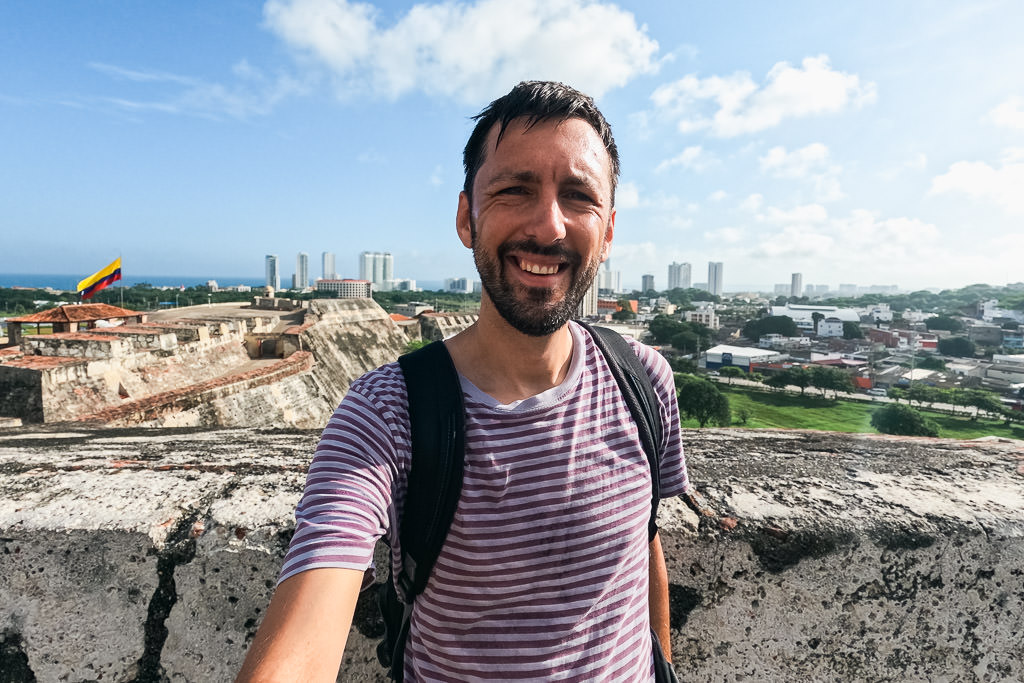
Best Things to Do in Cartagena
1. Explore the colonial streets of Old Town
Having traveled all over Latin America, I can genuinely say that Cartagena is one of the prettiest cities in the Americas.
It’s absolutely full to the brim with stunning colonial architecture. With colorful balconies, winding streets, and buzzing plazas, you’ll want to take your time wandering around the old town of Cartagena.
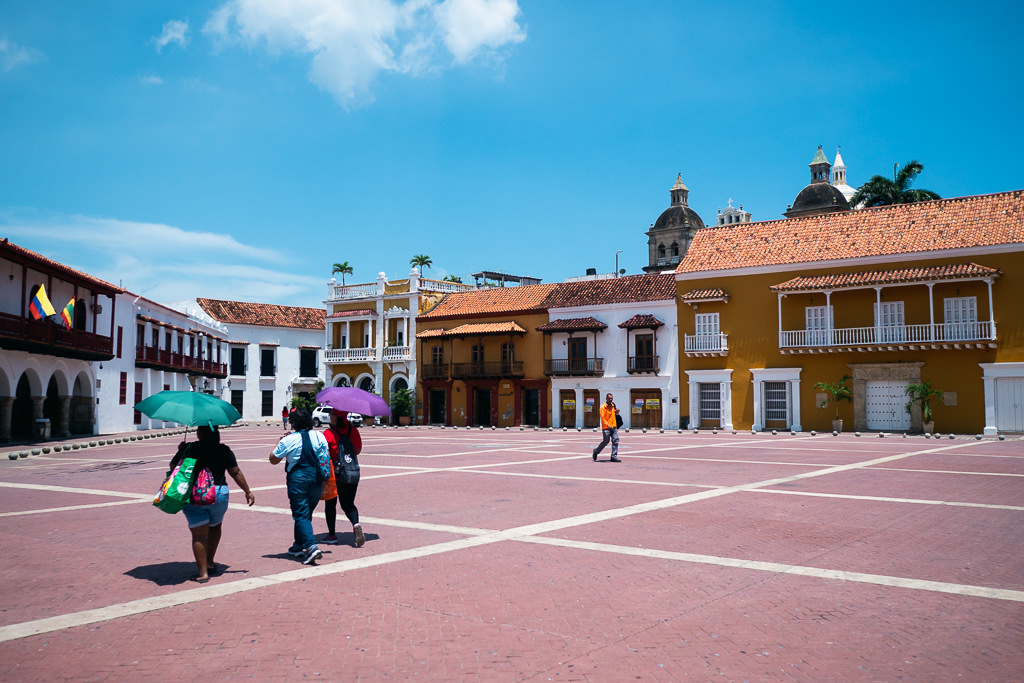
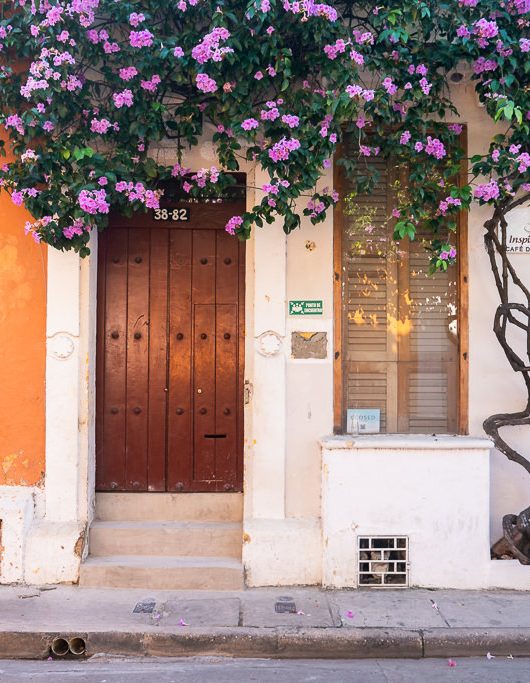
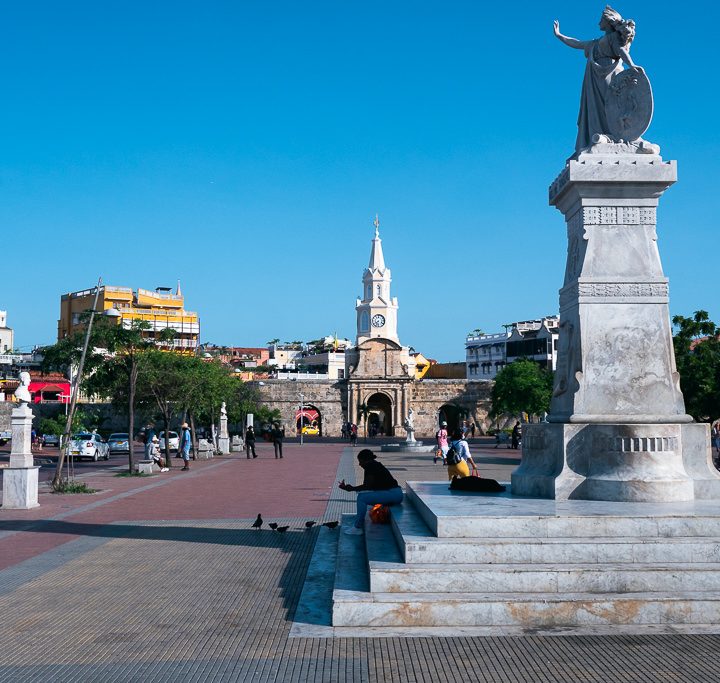
The Old Town contains some stunning historical sights that should not be missed. You can snag photos of the iconic Clock Tower, Las Bovedas, San Pedro Claver Church, and San Felipe Castle.
One of the best ways to discover the Old Town is by taking a walking tour, which will give you insight you would otherwise completely miss.
Along with the incredible architecture is the buzzing energy of the locals and street vendors. Music is playing on every street corner, and the colors of the many fruits and spices sold in the markets add to the vibrant atmosphere.
Make sure to snag a photo with the Colombian women who wear traditional dresses and carry fruit on their heads!
And keep an eye out for little monkeys in Centenario Park, just outside the Old Town’s walls.

2. Enjoy the Caribbean beaches
You can’t go to Cartagena and not enjoy the Caribbean waters!
However, avoid Playa Marbella and other beaches north of town as they’re not very pretty. There are much better choices available, depending on what you’re looking for.
For a day of fun in the sun, the easily accessible beaches around Bocagrande (map location) may be perfectly fine. They have warm Caribbean water, and vendors constantly pass by selling delicious food, cold drinks, and souvenirs. It’s also the closest one to the city so it’s easy to enjoy a morning exploring Old Town and an afternoon at the beach. Backed with high-rise apartments, Bocagrande may remind you faintly of Miami.
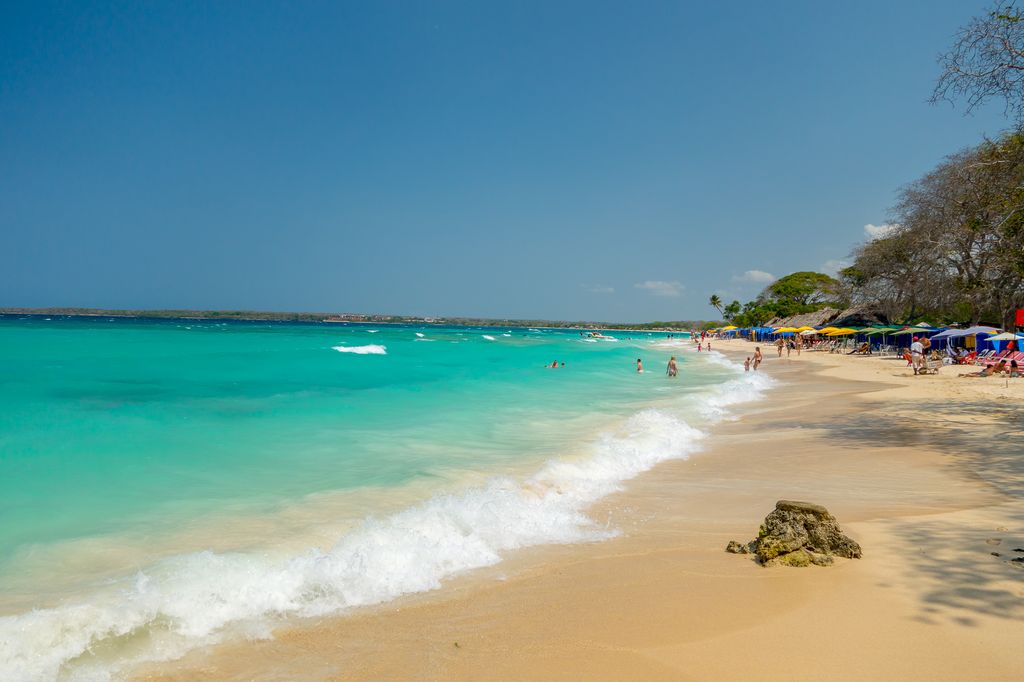
That said, Bocagrande is very much a city beach and it can get hectic. It’s usually full of locals, loud music, and vendors, so if you’re looking for a quieter beach, I recommend Playa Blanca.
Playa Blanca is about an hour from town (see map location), but it’s so worth it once you see the crystal-clear water and white sand. The fastest way to get there is by speedboat from the port, or you can take a shuttle van. This blog has the details.
An even better option for beaches is to go to the Rosario Islands, which I’ll discuss further below.
3. Explore the artsy area of Getsemani
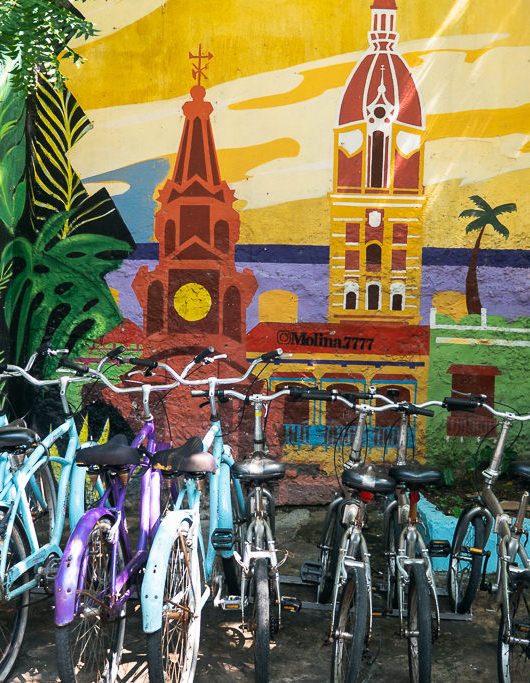
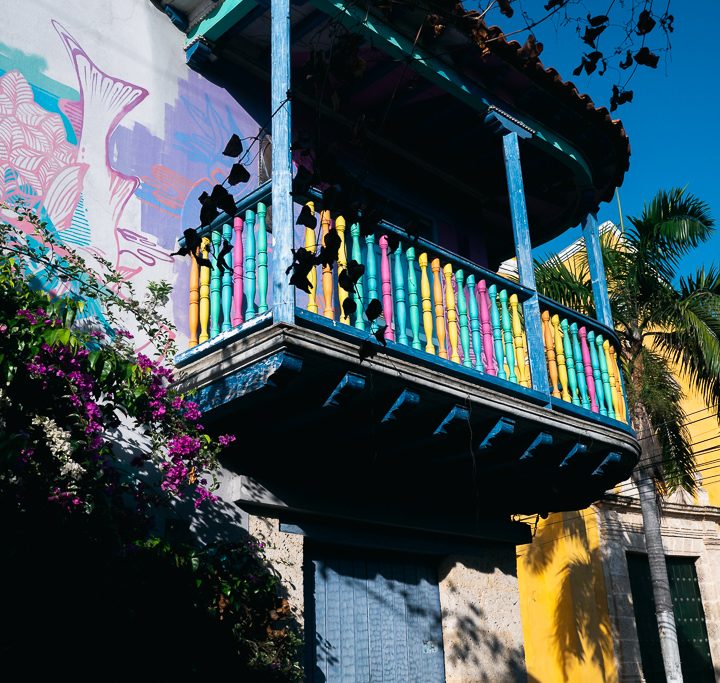
As good as the historic old town is, I much prefer the more down-to-earth atmosphere of Getsemani. This is the up-and-coming neighborhood of Cartagena, full of art galleries, cafes, bars, and restaurants.
The art scene in Getsemani goes crazy with some incredible street art and graffiti covering seemingly every wall. You could spend hours wandering around, admiring the pieces of work created by local artists.
Not to mention, Getsemani is where you’ll find some of Cartagena’s best restaurants and bars. Eating and drinking here is also much cheaper, so you can save your pesos for more exploring.
The energy in Getsemani is infectious, and I guarantee you won’t be able to leave without exploring every corner of this colorful neighborhood.
4. Appreciate Cartagena’s history at the city walls
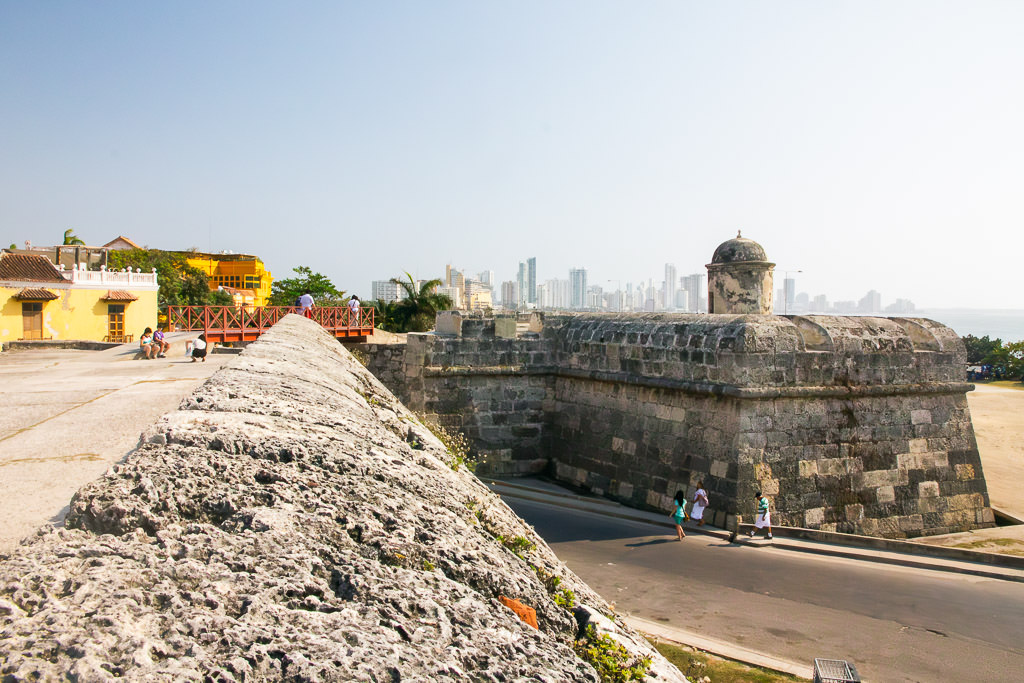
Cartagena was an important port during colonial times due to its strategic location on the Caribbean Sea. The city was heavily fortified with a wall that ran along the coast, which is still up and a really cool thing to see in Cartagena.
Visiting the historic wall offers an opportunity to learn about Cartagena’s past while enjoying some beautiful Caribbean Sea views. Because the port was so significant to the Spanish Empire, they needed to protect their goods from pirates, and the wall was the only way to do that. Today it’s a UNESCO World Heritage Site.
It’s free of charge and open all day, every day.
5. Visit San Felipe fortress for amazing views
- Opening Hours 7:00 AM — 6:00 PM
- Admission Price: 25,000 COP
- Location: Google Maps
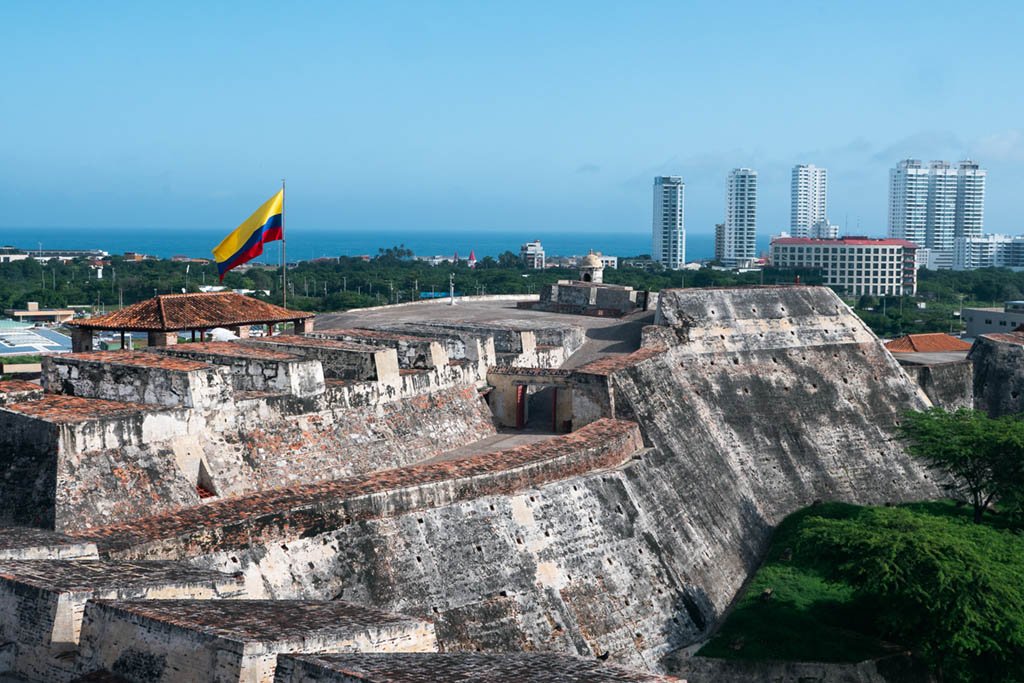
Continuing to explore the fortifications, the Castillo de San Felipe is an impressive castle from the 16th Century that’s located on the city’s highest hill. It was built as a defensive fort by Spanish military engineers and withstood countless attacks over the centuries.
The views from this fortress let you see all around Cartagena and out to sea. The entrance fee is pretty cheap, and you can easily spend an hour or so exploring this large structure.
One thing to note is that there aren’t too many information plaques around the castle, so if you’re intrigued by the history, you may want to hire a tour guide to give you the full rundown of its role in Cartagena’s history.
6. Marvel at the artifacts at the Zenú Gold Museum
- Opening Hours: 9 AM — 5PM (closed on Mondays)
- Admission Price: Free to enter
- Location: Google Maps
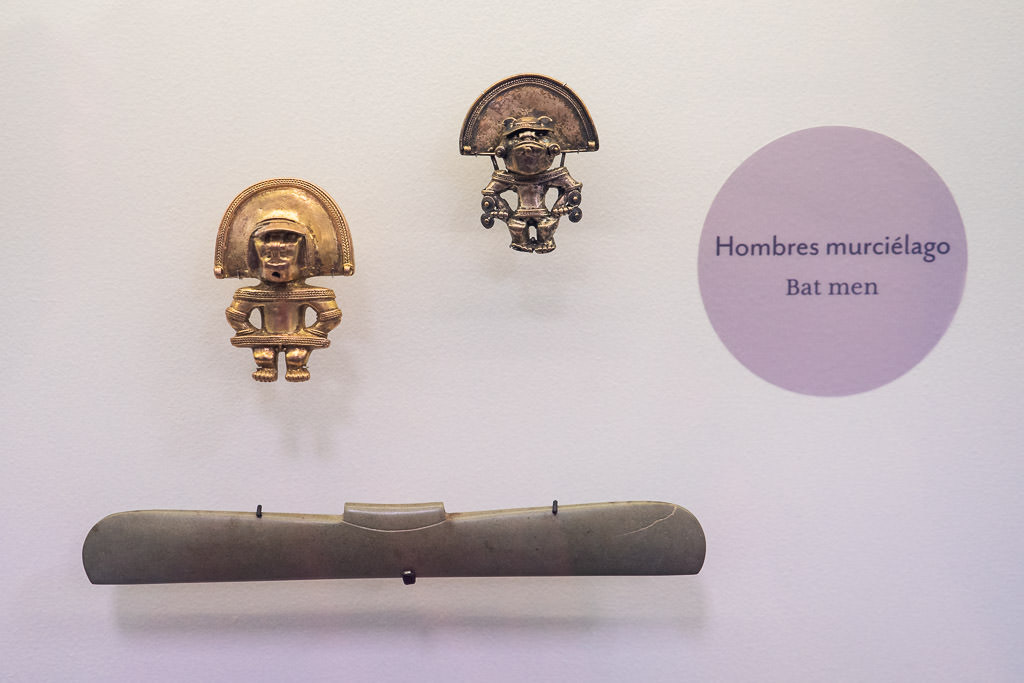
If you’re going to Bogota on your Colombia trip, you can skip this and visit the capital’s expansive and stunning gold museum instead. But if you’re only hitting up the north of Colombia, then it’s worth visiting the smaller Museo del Oro Zenú in Cartagena.
It focuses on pre-Columbian relics, particularly the culture and people of Zenu, with 600+ gold, silver & ceramic pieces on display.
This museum is not to be confused with an earlier small exhibit that was hosted inside the national bank, mentioned by older travel guides. The Zenú Gold Museum was completely renovated and reopened in 2023 with a larger collection.
7. Indulge in Colombian cuisine on a food tour
Colombian food may not be internationally renowned, but your opinion may change after taking a food tour in Cartagena. The traditional ingredients and flavors of Colombian cuisine really shine through when prepared with the right hands.
A great way to experience some of the best dishes is by taking a food tour that will stop at some of the best local restaurants, markets, and street vendors. I recommend this Cartagena food tour on GetYourGuide — it’s similar to a tour I did a few years ago and has a 4.5/5 rating.
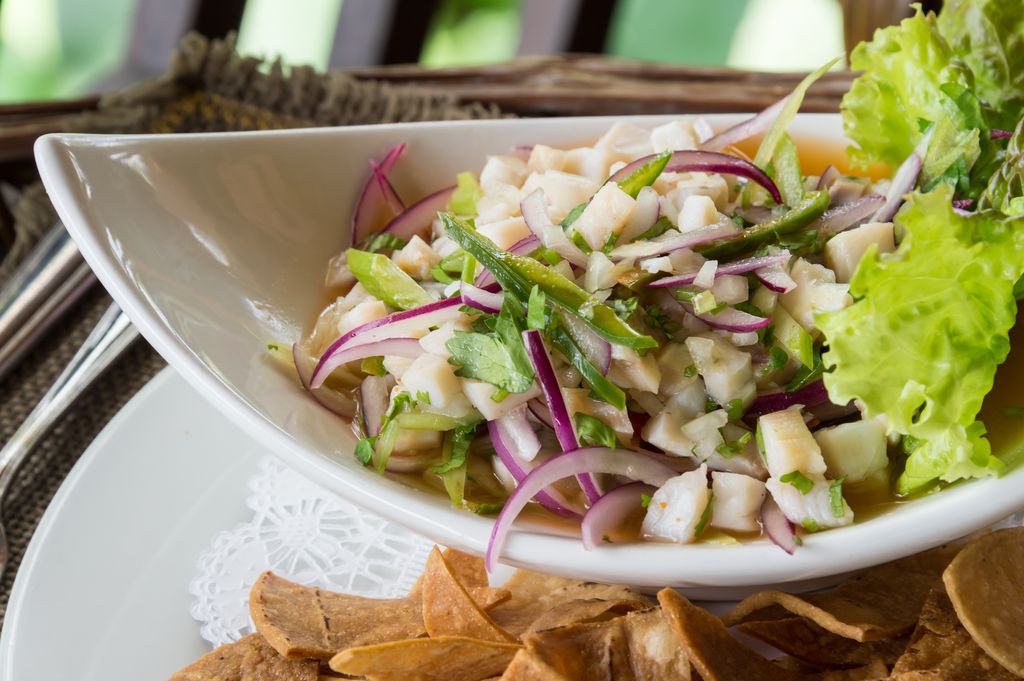
Alternatively, I recommend heading out on a food tour with Duran Duran. They wrap up their food tour with a cooking class where you learn to make some famous Carribean dishes. You’ll get to practice your Spanish and eat with a host family.
If you’re thinking of sampling some street food on your own, I highly recommend the arepas con queso; these cheesy fried pancakes are absolutely addictive. Don’t forget to try the ceviche, a dish traditionally made with fresh seafood and citrus. La Cevecheria is one of the main places to grab some.
Last but not least, arroz con coco is a must-try; it’s a coconut rice dessert that you’ll find all over town. Sometimes they sell it out of the back of their car trunks, but don’t be scared to give it a try!
8. Experience Cartagena’s buzzing nightlife
I don’t know if it’s the hot salsa music blasting from all directions or the irresistible mojitos that seem to be everywhere, but one thing’s for sure, there’s something really fun about Cartagena’s nightlife.
You can find all sorts of bars and clubs throughout the city, each with its own unique atmosphere. And while most of the country is blasting Bad Bunny—and rightfully so. Cartagena brings out all of the African and Latin influences in its music, jamming out to Afro Beats and Salsa, so prepare yourself for a full-on dance party.
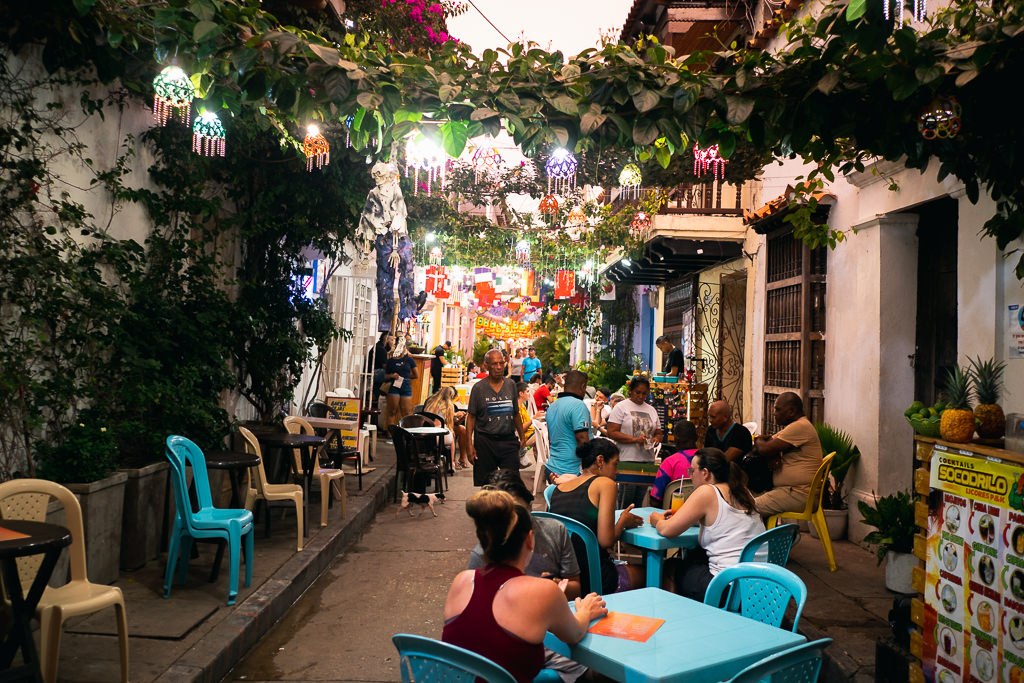
Cafe Havana is one of the main clubs to end the night out. It’s a classic Latin dance club with plenty of mojitos and beers. You might wanna have a chill beach day after a night out at Cafe Havana—just a warning! Ha!
For those looking for something a bit more laid back, there are also a handful of bars throughout the old town that offer delicious cocktails accompanied by live music. El Patio in Getsemani has a relaxed vibe with great drinks and live music.
Trinidad Square in Getsemani is always a fun spot to check out, especially on the weekends, as street performers and street food sellers create a very fun and spontaneous atmosphere, enjoyed by both locals and tourists.
9. Take a boat to the Rosario Islands
If you love a picture-perfect beach day, you’ll want to stop at the Rosario Islands. This island chain is located just off the coast of Cartagena and can be easily reached by boat directly from Cartagana’s old town in under an hour.
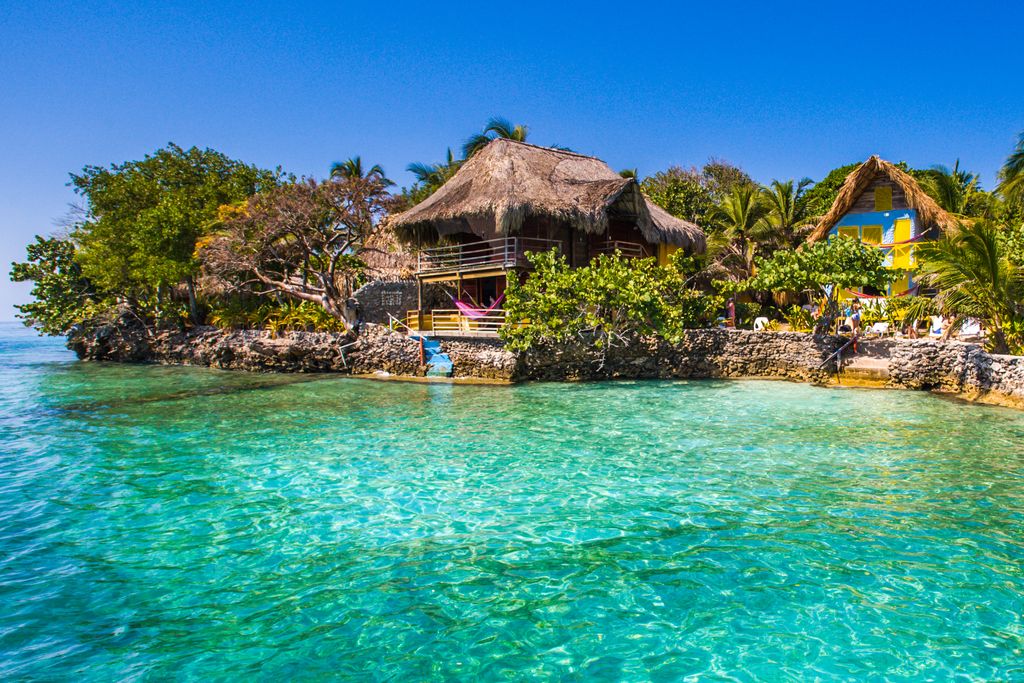
The Rosario Islands are home to some of Colombia’s nicest beaches, where you can enjoy its clear, blue waters, soft white sand, and lots of fish swimming around you. Rent a snorkel and explore the underwater world, take a stroll on the beach, or just relax in one of the many hammocks scattered around.
It’s a popular day trip, but staying overnight on the islands can offer a more relaxed experience, as you can watch the sunset in peace after the day-trippers have left. With ceviche for dinner and the sound of the waves crashing against the shores, you really can’t beat that! See our 1 week Colombia itinerary for some ideas on where to stay on the Rosario Islands.
To get to the islands, you can either book your boat through a tourism agency which would include a tour around the island, or you can do what I usually do and buy a ticket on one of the public boats. Simply head to La Muelle la Bogegita dock in Cartagena. They leave at 8:00 a.m. and 10:00 a.m. each morning and leave the islands at 2:30 p.m. It costs 40,000 Colombian pesos each way.
10. Take a dive into the mud volcano
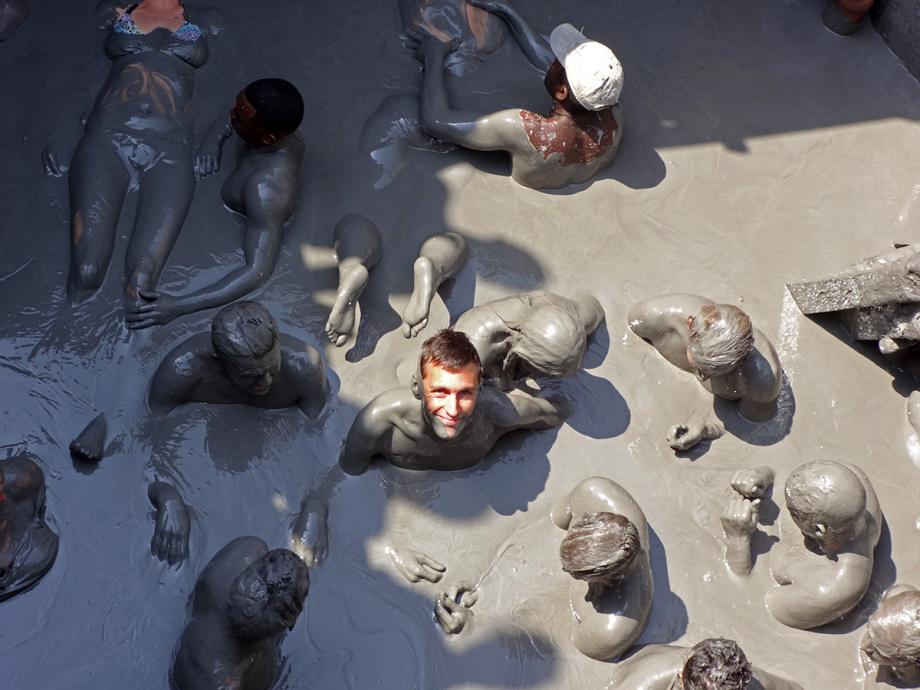
This may not be quite the best thing to do in Cartagena in an objective sense, but it can be great fun if you have some time to spare and won’t mind doing something a bit silly!
About an hour’s drive outside of Cartagena is a so-called mud volcano, which is really just a cone-shaped mound with a thick cement-grey mud slurry inside. Floating inside this natural bath is a strange and intriguing sensation, as the mud’s viscosity is just so that it keeps you suspended in place.
You can get in all the way from the neck down, or you can decide to float on top of the surface like you’re in the Dead Sea. Sometimes you keel over and have to paddle like a dog to find your centre of gravity again.
It’s a somewhat tacky tourist activity and it’s not a cultural revelation, but it’s a pretty hilarious half-day excursion. It’s worth it especially if you’re with a group and don’t mind some unpretentious fun.
11. Head back into history at the Naval Museum
- Opening hours: 9:00 AM — 2:00 PM Tues – Sat
- Admission fee: Free
- Location: Google Maps
Of course, with Cartagena playing such an important part in Colombia’s history, history buffs will love visiting the Naval Museum.
This museum is a great way to learn about Cartagena’s rich maritime history; it displays an impressive collection of ship replicas, weapons, and artifacts that date back to the 15th century.
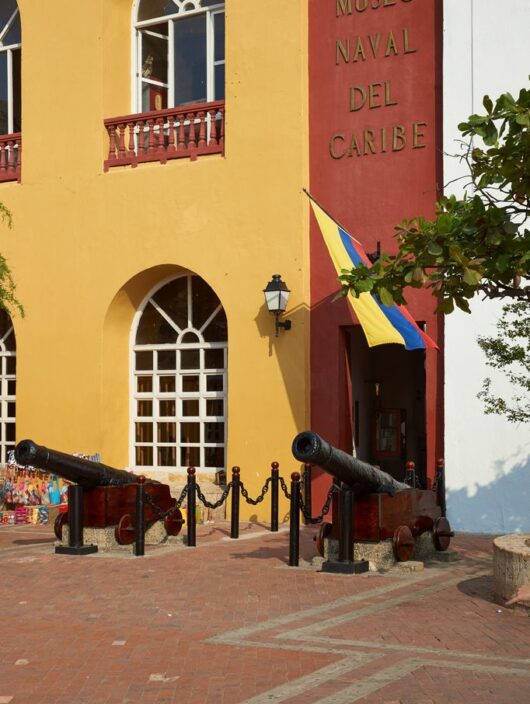
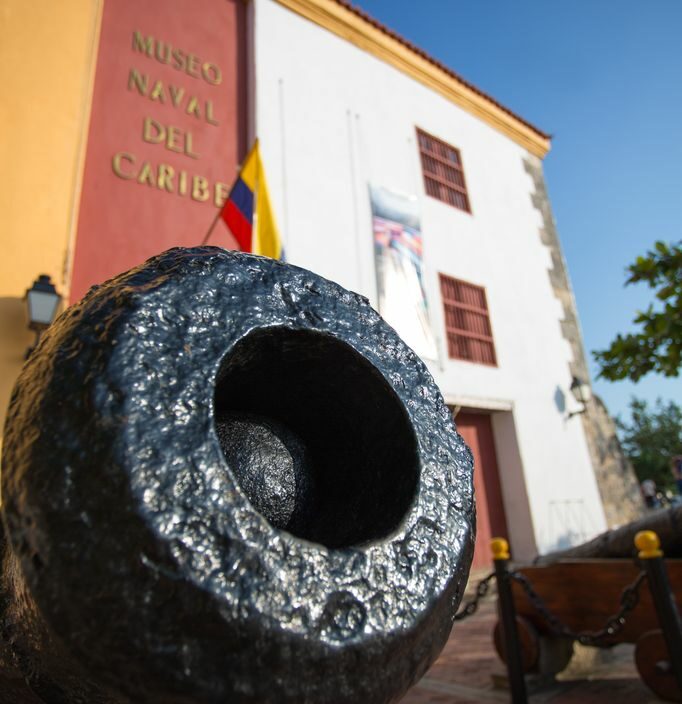
The museum documents more than 300 years of naval conflicts that began with pirate raids in the 1600s. And showcases numerous intriguing exhibits. One of my favorite exhibits is the Spanish galleon San Jose, which went down while carrying more than 200 tons of gold.
The collection of antiquated maps, ship models, cannons and weapons, and historical records all weave a captivating tale. It’s a great way to get to know the city and its past!
12. Drink cocktails at a world-class bar
It’s not too often that we have the chance to enjoy something that has made a world top 10 list without spending a small fortune, but lucky for us, we can do just that!
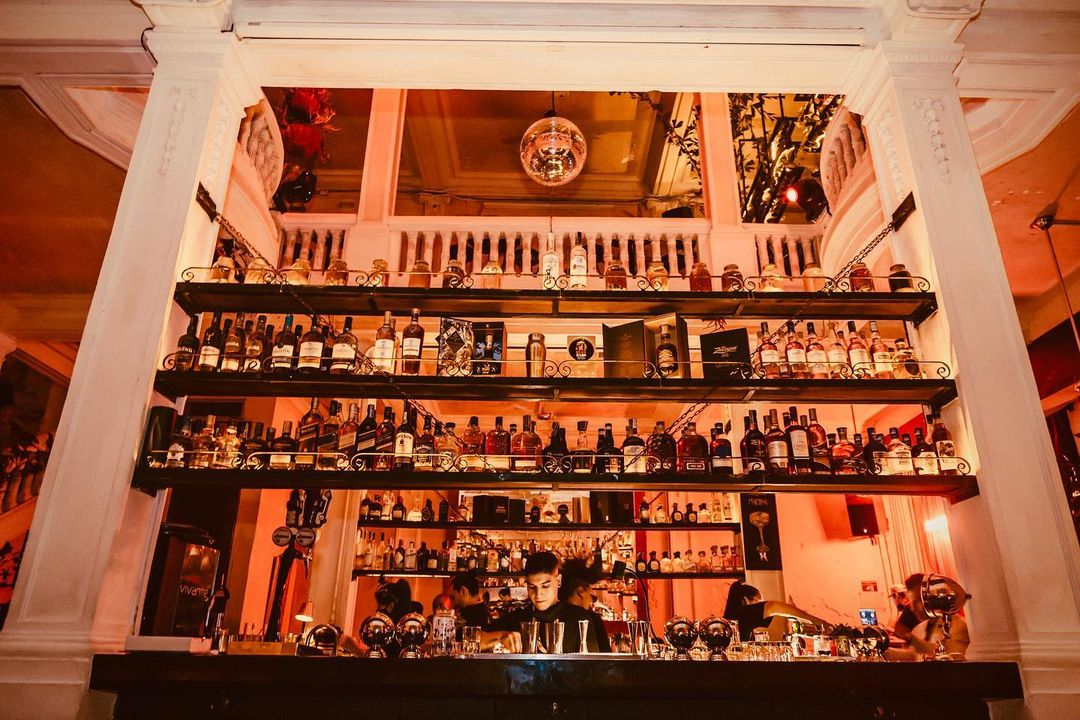
Alquimico is one of the best bars in all of Cartagena and was recognized by The World’s 50 Best Bars as the 10th best bar in the world in 2022. If you love a good cocktail and an even better night out, then put this on your Cartagena bucket list.
The atmosphere of the 3 story high bar is amazing, and you’ll find yourself in a lively crowd of locals and tourists, enjoying some delicious drinks and perhaps dancing until the early morning hours.
Be sure to try the Petronio, a lemony tequila drink that will really get your dance moves going.
13. Sample the famed Colombian coffee
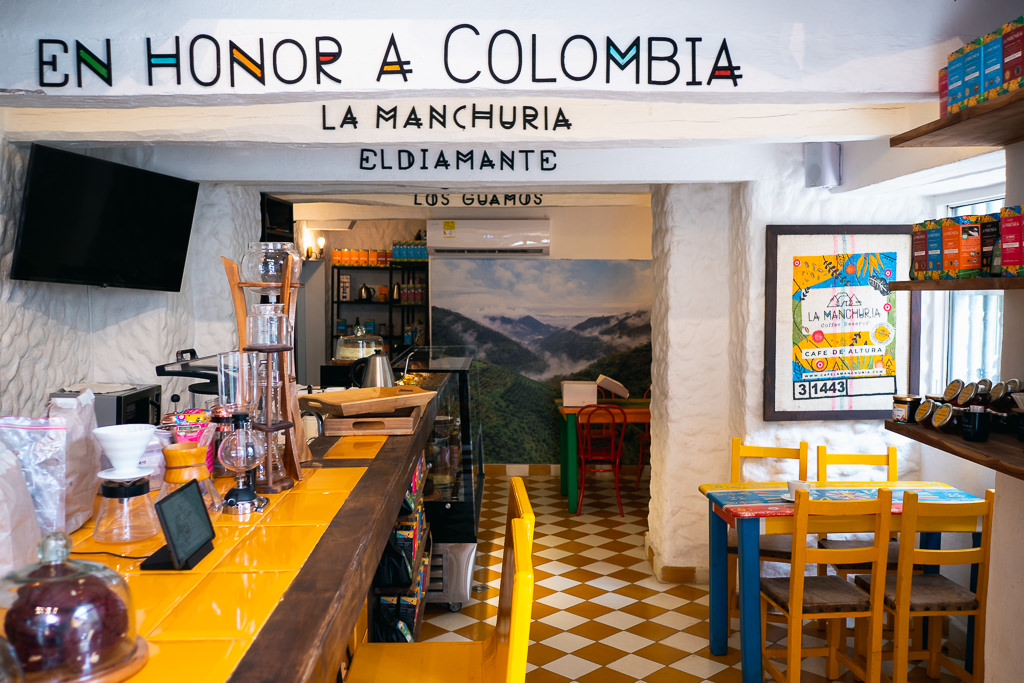
Colombia is of course well known for its high-quality Arabica coffee. It used to be the case that nearly all of it was exported while Colombians would only drink cheaper coffee from elsewhere, but nowadays you can find plenty of fine local roasters.
They know just how to get the most flavor and aroma from their homegrown beans and offer the perfect instruction to Colombian craft coffee.
My favorite place to go for a perfect batch brew or V60 is the cozy Café La Manchuria located in the middle of the old town, which also sells its own beans and other artisanal local products.
14. Visit the Convento de la Popa
- Opening Hours: 8.30 AM – 5.30 PM (every day)
- Admission Price: 11,000 COP
- Location: Google Maps
Perched on top of the 150-meter hill known as Mt. Popa, this convent can be easily seen from the Getsemani district, especially when it’s lit up at night.
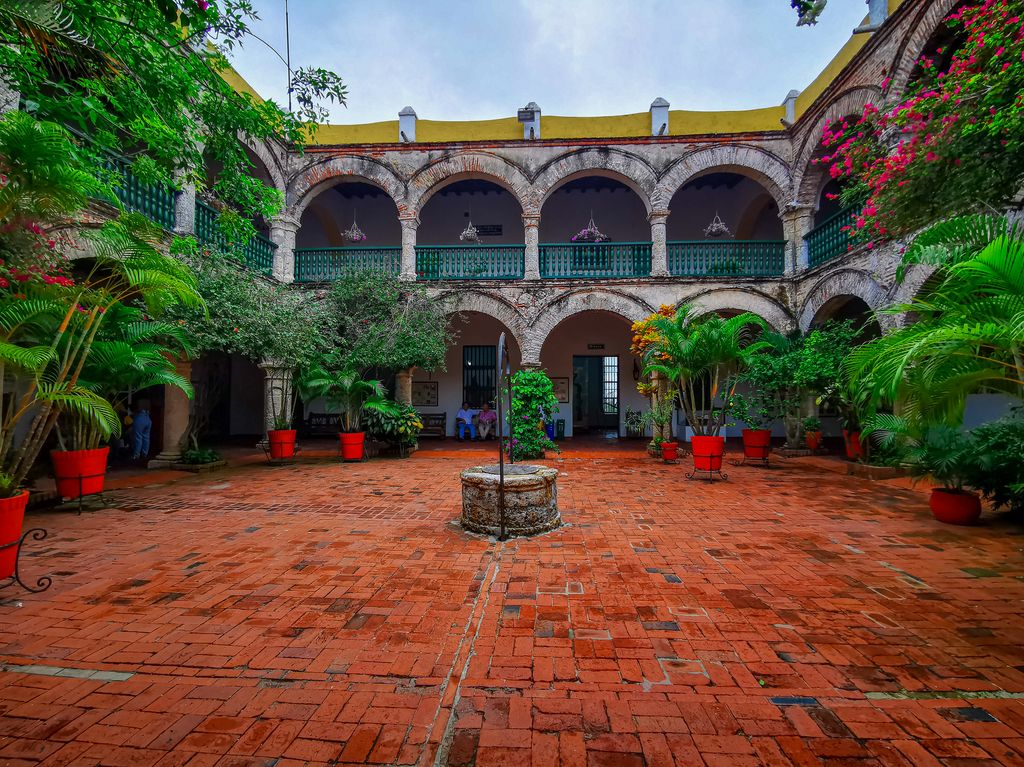
It was built in the 1600s as a convent but also served as army barracks over the years, but today it is a religious museum that is worth visiting for its exhibits, but more so for its views of Cartagena and the wonderful patio filled with flowers and plants.
15. See the real Cartagena at Mercado de Bazurto
As beautiful and colorful as central Cartagena is, the rest of the city has a much more sprawling, chaotic, and even gritty character.
Knowing that what tourists experience in Cartagena is very much inside an artificial bubble, you may wish to see what the city is like in the way that most locals will experience it day to day.
The huge indoor Mercado de Bazurto is where locals go to shop for their goods and cooking ingredients and it’s a riot of color, activity, and smells both pleasant and unpleasant. Exploring it is a genuine experience that will give you real insight into the local culture. I like this blog’s report, which called it their Anthony Bourdain experience (I felt the same!).
That said, it’s not a typical ‘tourist’ place and may not be for everyone. It’s smelly, noisy, and is known for pickpockets — but it’s also the real Cartagena. It can be difficult to know how to navigate this chaotic place, so it’s recommended to visit it with a local guide who can show you around, call your attention to some of the unusual goods sold, and introduce you to some of the friendly vendors.
Some links may be affiliate links, meaning I may earn commission from products or services I recommend. For more, see site policies.
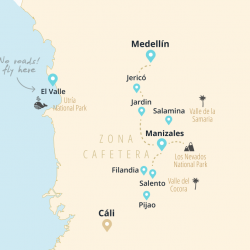
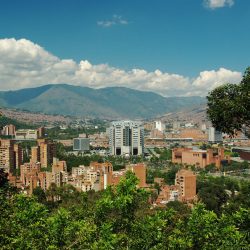




0 comments
Leave a comment
Your email address will not be published. Comments are manually moderated.